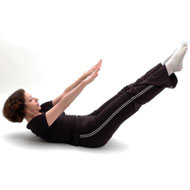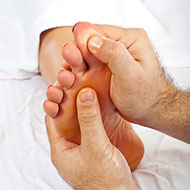Therapeutic Benefits of Heat and Pressure
Traditional Chinese believe that the life force (Qi) that is present in our body is composed of two opposing forces yin and yang. A harmony of these two forces is required for good health and wellness. When the Qi is blocked, it causes imbalances in the yin and yang, resulting in illness, aches, pains and even mental disharmony.
Acupressure is a form of Traditional Chinese Medicine (TCM) very similar to acupuncture. In this form of therapy, pressure is applied to the points in the body (pressure points) through which the Qi flows. Qi flows along paths called meridians in the body.
Acupressure is performed by applying pressure using the hand, using rollers and in some cases using heat. Acupressure differs from acupuncture in that it does not involve the use of needles to regulate the flow of Qi.
What is thermal acupressure therapy?
When heat is used to apply pressure on the acupressure points to correct the flow of Qi, it is known as thermal acupressure therapy. Thermal acupressure massage works on the concept of balancing Qi using heat. Generally, in TCM, it is believed that cold disrupts the flow of chi, while hot treatment does the exact opposite. Which is the reason why even in Chinese diet, warm water is preferred to drinking cold water, which is believed to aggravate most symptoms.
In Chinese medicine, heat was applied along with herbs and other therapeutic oils. This was because heat helped the oil infuse into the body better and make it possible to massage through the deeper layers of the muscles. Heat is applied on the body through various means such as a process of burning herbs at the pressure points in a method known as MOXIBUSTION. In this process an herb called moxa or the mugwort herb is usually used. This is believed to help improve blood circulation and restore the flow of Qi. Heat is also generated by rubbing the pressure points vigorously.
Another popular method of thermal acupressure is by using infra-red rays. In this method, heat also applied on the body by the use of beds with heated jade stones that release infrared rays. These modern innovations are like tanning parlors where you do not need someone to help you; all you need to do is lie down on these beds or tables and heat will penetrate your body, improving the circulation and restoring qi. However, the only negative with these beds is that they do not treat specific ailments, rather only provide relaxation and rejuvenation.
Benefits
Listed below are some of the benefits that thermal acupressure therapy is believed to provide.
- Improves blood circulation and restores the balance of Qi
- Reduces stress
- Relaxes sore muscles and stiffness in the body
- Heat and spinal stimulation helps relive aches and pains in the back
- Improves immunity by increasing White Blood Cell (WBC) production, thereby increasing the body’s ability to fight disease
- Improves lymph flow
- Removes toxins from the body
- Promotes growth of new skin
- Promotes weight loss
- Regulates blood pressure
- Regulates blood sugar
- Increases energy levels
Side effects
Acupressure as such has no known side effects as such; however, there are some people for whom thermal acupressure therapy is not advised. People with too much internal heat will not benefit from this form of acupressure. People with excessive internal heat are characterized by flushed faces and may sometimes have rashes on their bodies. An acupressure therapist will be able to tell whether or not your body heat is in the normal range to be able to undergo this form of treatment.
Also, thermal acupressure therapy is a more complex form of acupressure and should not be done at home. You will need to get help from an expert; otherwise you may end up hurting yourself.
References
Read more articles from the Alternative Therapy and diseases Category.

 Find Pose
Find Pose

